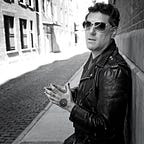I take criticism of parapsychology seriously and, in fact, look for canny critics with whom to engage. To quote skeptic Ray Hyman and parapsychologist Charles Honorton (1986): "The critic can contribute to this need only if his criticisms are informed, relevant, and responsible.”*
Part of the difficulty of engaging with critics is the oft-used device of denial versus engagement. E.g., you note ”the lack of any replication” of Bem’s work.” The article itself documents the 10-year record of replication of Bem.
You wrote that in “130 years, parapsychology hasn't produced even single replicable result.” The record is so obviously contrary to that statement that I offer my rely based solely on your civility of tone, which I appreciate. To note one of many examples, a comprehensive analysis of replicated psychical research data recently appeared in the flagship journal of the American Psychological Association: “The Experimental Evidence for Parapsychological Phenomena: A Review” by Etzel Cardeña, American Psychologist, 2018, Vol. 73, No. 5, 663–677. I further review the record here: https://mitch-horowitz-nyc.medium.com/the-enduring-legacy-of-parapsychologist-j-b-rhine-e9ee9f20e3cf
Is there solid criticism of contemporary ESP research? Yes, although too little. I cite a good example in my book Daydream Believer:
In 2015, Douglas M. Stokes, a mathematical psychologist and former associate editor of the Journal of Parapsychology, laid out the case that the statistical significance for psi phenomena could be wiped out by levels of fraud in the field commensurate to or lower than those found in other branches of the sciences.** I mentioned earlier that the social and natural sciences are experiencing a credibility gap, which may be a longstanding issue now coming to light due to increased scrutiny. Based on current analysis and surveys, Stokes wrote that fraud rates in biomedical and psychology research are probably at a respective 9 percent and 10 percent. As a result, additional studies suggest that “the use of the traditional 0.05 level of statistical significance as the criterion for the admission of a research finding into the academic literature will result in a majority of the published findings being false, once false positives are taken into account.” Based on Stokes’s modeling, if overall fraud rates in parapsychology are just under half of those in other sciences, the deception would prove significant enough to eliminate statistical proof in favor of the null hypothesis.
* “A Joint Communiqué: The Psi Ganzfeld Controversy” by Ray Hyman and Charles Honorton, Journal of Parapsychology, vol. 50, December 1986
** “The Case Against Psi” by Douglas M. Stokes, Parapsychology: A Handbook for the 21st Century edited by Etzel Cardeña, John Palmer and David Marcusson-Clavertz (McFarland, 2015)
